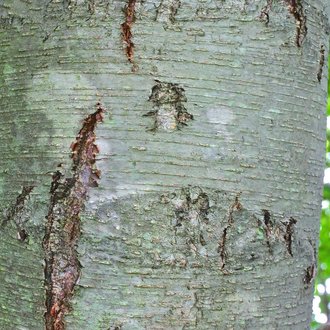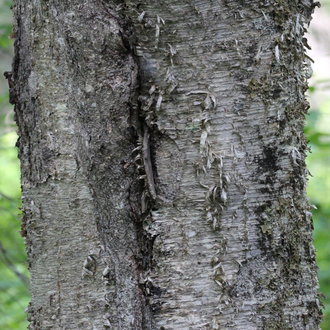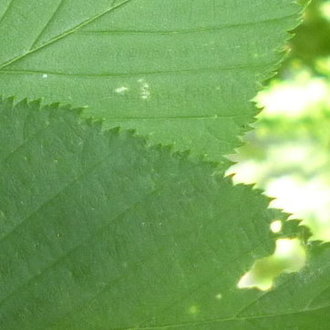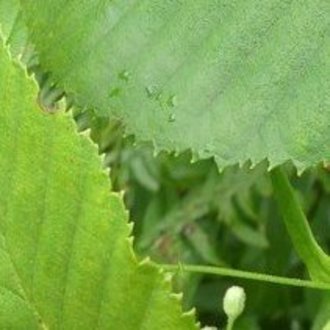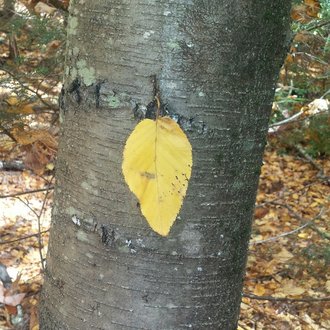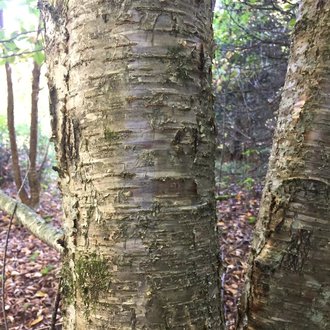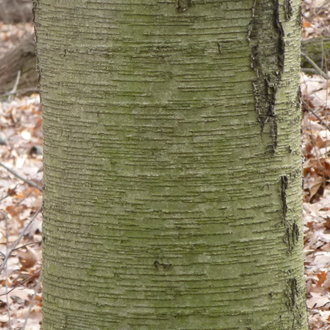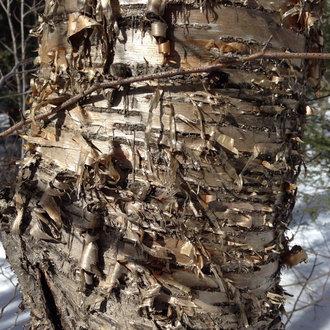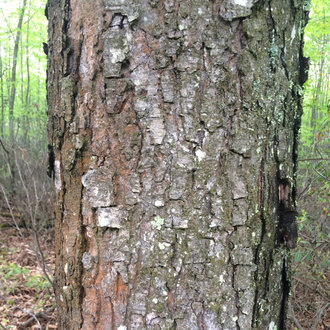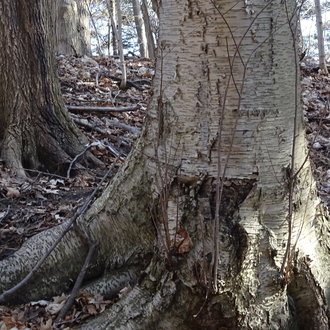Sweet Birch vs Yellow Birch
These two birches can be confused where their ranges overlap, as both have a similar leaf shape, their bark is often similar in color, and both have a wintergreen aroma to their twigs and bark. They can be reliably distinguished by bark texture, or regularity of serrations on leaf margins.
Sweet Birch (Betula lenta) | Yellow Birch (Betula alleghaniensis) |
A tree native to eastern North America, mostly from the Appalachians through southern New England. | A large birch native to northeastern North America, named for the often-yellowish color of its bark. |
Bark does not flake or peel. Bark completely smooth on young trees; mature trees have vertical cracks in bark. Photo © Fluff Berger, CC BY-SA 4.0. | Bark flakes off in thin, horizontal, ribbon-like strips. Pattern of flaking relatively consistent across trees of different ages. Photo © Rob Foster, CC BY 4.0. |
Serrations on leaf margins more regular and more dense, usually more than 6 teeth per cm. Photo © Even Dankowicz, CC BY 4.0. | Serrations on leaf margin more irregular, and sparser, usually fewer than 6 teeth per cm. Photo © Christian Grenier, Public Domain. |
Bark often darker in color, not yellowish, sometimes brownish. Photo © Laura Gaudette, CC BY 4.0. | Bark often yellowish. Photo © Ken Kneidel, Public Domain. |
Bark always matte or dull, not shiny. Photo © Ira Gershenhorn, Public Domain. | Bark of young trees often shiny, giving it a metallic appearance. Photo © Charlie Hohn, CC BY 4.0. |
Bark eventually develops scaly texture on very old trees. Smooth, horizontal texture disappears, especially lower down on the trunk. Photo © awiker92, CC BY 4.0. | Old trees still retain smoother, horizontally-striped bark appearance, even at the base of tree; pattern even evident on large surface roots. Photo © Reuven Martin, Public Domain. |
References & External Resources
These short lists show only links helpful for ID. For a complete list of references and resources also covering other aspects of ecology, visit the links section of the full article on each plant, which is the first entry here.



